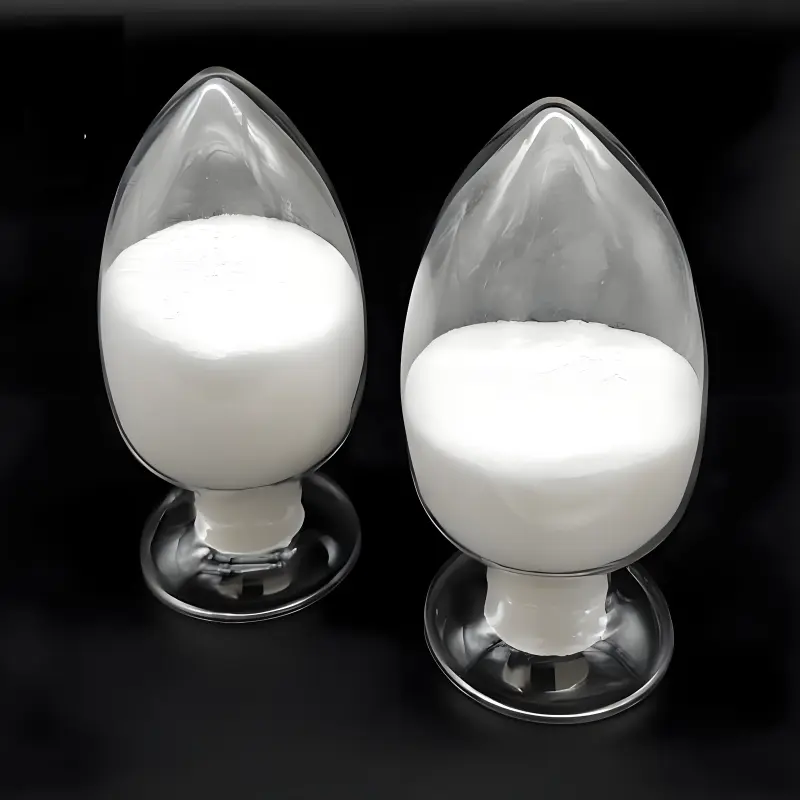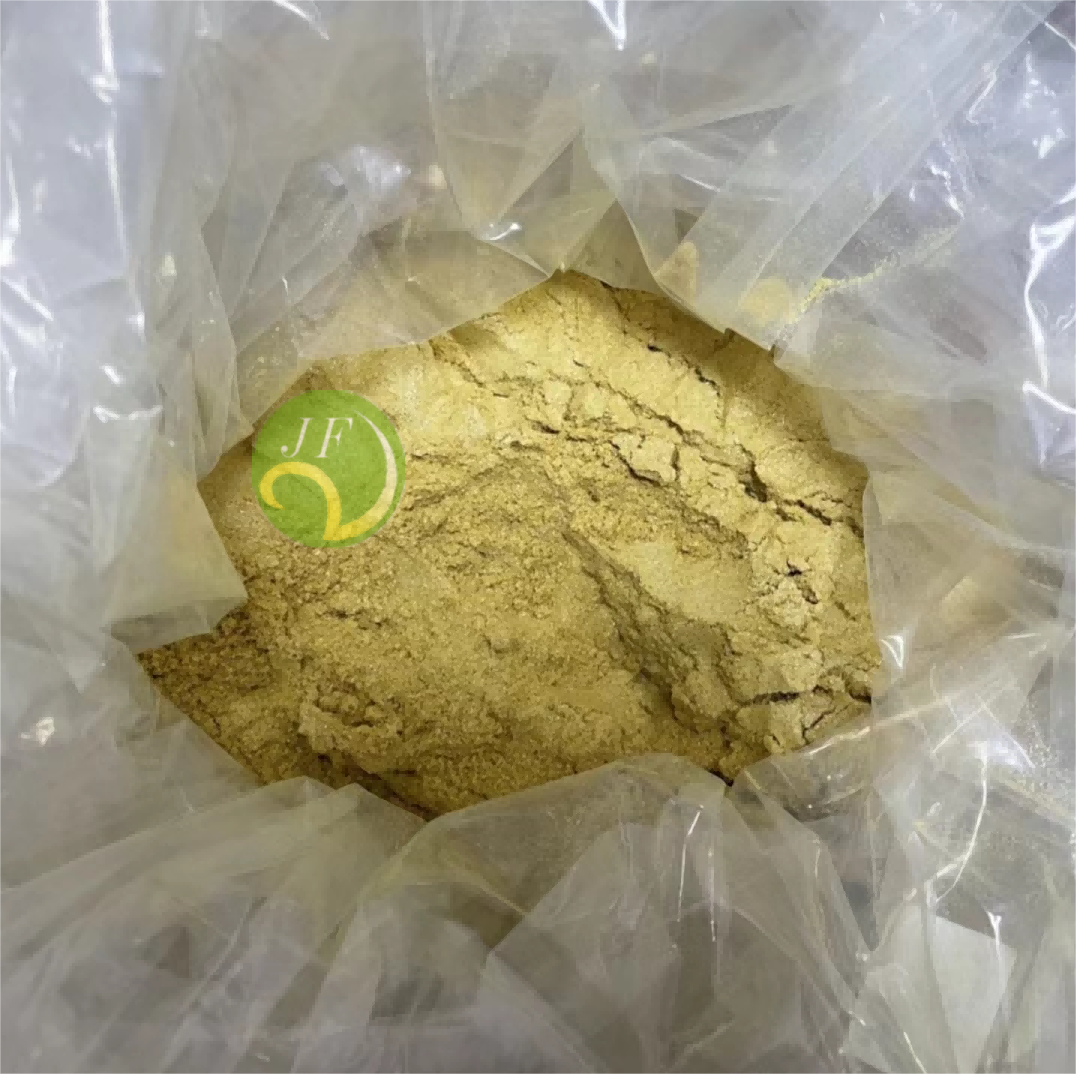-
Categories
-
Pharmaceutical Intermediates
-
Active Pharmaceutical Ingredients
-
Food Additives
- Industrial Coatings
- Agrochemicals
- Dyes and Pigments
- Surfactant
- Flavors and Fragrances
- Chemical Reagents
- Catalyst and Auxiliary
- Natural Products
- Inorganic Chemistry
-
Organic Chemistry
-
Biochemical Engineering
- Analytical Chemistry
-
Cosmetic Ingredient
- Water Treatment Chemical
-
Pharmaceutical Intermediates
Promotion
ECHEMI Mall
Wholesale
Weekly Price
Exhibition
News
-
Trade Service
Author: Xiuying People's Hospital of Peking University Endocrinology publish this article the author's permission, please do not reprint without permission
.
Thyroid-related ophthalmopathy, also known as Graves' ophthalmopathy (GO), is the main extrathyroid manifestation of Graves' disease (GD)
.
GO not only affects the quality of life (QoL) of patients, but also directly and indirectly causes a major public health burden
.
At present, the treatment of moderate to severe GO still faces many challenges, and the current treatment effects of the drugs used are not satisfactory
.
Following the release of GO management guidelines by the European Thyroid Association (ETA)/European GO Group (EUGOGO) in 2016, several related studies have been published, especially RCTs for the treatment of moderate to severely active GO with new biologics, which prompted EUGOGO The guidelines were updated in 2021
.
Here is a summary of the main content of the update of this guide
.
The expert introduced Professor Zhang Xiuying, MD, deputy chief physician
.
Now working in the Department of Endocrinology, Peking University People's Hospital, and Peking University Diabetes Center
.
Has long been engaged in clinical, scientific research, teaching and popular science work in endocrinology
.
In 2012, he won the Global Health Scholarship and completed post-doctoral research
.
Participated in the compilation of the "Twelfth Five-Year" National Medical College Undergraduate Planning Textbook "Internal Medicine" 2nd edition, and participated in the translation of "Harrison's Internal Medicine" 19th edition
.
He is also a member of the editorial board of the Chinese edition of the Chinese Journal of Diabetes and Care, and a member of the Standing Committee of the Thyroid Committee of the Beijing Society of Endocrinology and Metabolism
.
Presided over or participated in a number of national-level research topics and international cooperation projects, and published a number of high-impact factor research papers as the first author
.
1.
Timely referral and standardized assessment Over the past 30 years, the incidence and severity of GO have shown a downward trend.
This is due to factors such as reduced smoking, early diagnosis and control of thyroid function, and multidisciplinary cooperation
.
Mild GO can progress to severe cases, requiring expert advice and guidance to formulate management strategies
.
Therefore, timely referral of overt GO and patients at risk of exacerbation (mild and active GO, smoking, severe/unstable hyperthyroidism, high titer TSHR-Ab) is essential
.
The evaluation of treatment outcome should be standardized periodically after the end of the intervention through key subjective results (patient report, PRO) and objective results (clinician report, CRO)
.
The preferred PRO is the verified GO-QoL questionnaire
.
The appropriate CRO depends on the type of intervention used
.
For moderate to severe activity GO, it is recommended to use the recently revised comprehensive index, which consists of objectively measured indicators: palpebral fissure reduction ≥2mm, 5 CAS reductions ≥1 point, eyeball reduction ≥2mm, and eye muscle increase ≥8° Shrink
.
Other ocular, serological and imaging features can be used as secondary results, including exophthalmos, palpebral fissure, eye movement, visual acuity, CAS, intraocular pressure, orbital volume assessment, MRI, and TSHR-Ab
.
Re-examination and re-evaluation 3 months and 6 months after treatment
.
2.
Strengthening the management of risk factors When a patient is suspected of GD, no matter what the clinical phenotype, every effort should be made to eliminate risk factors and prevent the occurrence and/or progression of GO
.
All GD patients should be urged to quit smoking regardless of the presence of GO
.
Smoking increases the risk of GO in GD patients and is associated with more serious GO; the occurrence or progression of GO after radioactive iodine (RAI) treatment is more common in smokers; the effect of immunosuppressive therapy in smokers is slow and poor
.
Adequate control of abnormal thyroid function is essential
.
Both hyperthyroidism and hypothyroidism have a negative impact on GO
.
Consistent with the expression of TSHR as an autoantigen on orbital target cells of GD/GO patients, high titer TSHR-Ab is associated with both children and adults GO
.
High cholesterol is an emerging and potential risk factor for GO, which may be related to the pro-inflammatory effect of cholesterol
.
Observational studies and RCTs have confirmed that RAI is related to the occurrence and/or progression of GO
.
To prevent the progression of RAI-related GO, short-term oral prednisone therapy can be used (see attached table)
.
3.
Management of moderate to severe active GO For patients with moderate to severe active GO, the early goal is to shorten the active period of the disease and improve the subjective and objective eye performance
.
If GO is treated early within 1 year after onset, the outcome is usually better
.
According to published trials, the efficacy of immunosuppressive therapy is 50-80%, but it is difficult to achieve a satisfactory overall effect
.
Residual inactive diseases benefit from rehabilitation surgery
.
Those who do not respond to first-line treatment may need to use different drugs alone or in combination for second-line treatment, but some patients still do not respond or only partially respond and require surgical treatment
.
Combined with the newly published RCTs in recent years to evaluate the pros and cons, efficacy and safety, the 2021 version of the guidelines makes corresponding updated recommendations for first-line treatment and second-line treatment options (see figure)
.
Figure 1 First-line and second-line treatment options for moderately to severely active GO 1.
First-line treatment for moderately to severely active GO As the first-line treatment for patients with moderate to severe active GO (with or without diplopia)
.
As shown in the figure, for most patients with moderately to severely active GO, intravenous methylprednisolone (12 weeks moderate cumulative dose 4.
5g) + mycophenolate sodium 0.
72g (or 1g mycophenolate mofetil)/ Days lasted for 24 weeks, showing good efficacy and safety
.
For patients with continuous/intermittent diplopia, severe exophthalmos, and severe inflammatory tissue changes, a higher cumulative dose of intravenous methylprednisolone (7.
5g) monotherapy is used as the first-line treatment
.
2.
Second-line treatment of moderate to severely active GO patients who do not respond to first-line treatment and persistent moderate to severely active GO patients.
This edition of the guidelines has six alternative second-line treatment options: (1) Careful ophthalmology and After biochemical (liver enzyme) assessment, the second course of intravenous methylprednisolone (from 0.
75g per week, the cumulative dose does not exceed 8g); (2) Oral glucocorticoid combined with cyclosporine or sulfazole Purine; (3) oral or intravenous glucocorticoid combined with orbital radiotherapy; (4) teprotumumab (availability and cost limited); (5) rituximab (not suitable for those at risk of DON); (6) care Razumab (glucocorticoid-resistant patients may consider using it)
.
From the general characteristics of GO, they are most likely to be effective for intravenous glucocorticoids; mycophenolate mofetil, tocilizumab, rituximab and cyclosporine can significantly improve ocular inflammation, while orbital radiotherapy ( Combined with glucocorticoid) is more helpful to improve eye muscle movement and/or diplopia
.
In contrast, teprotumumab has the strongest effect on exophthalmos.
The FDA approved it for active moderate to severe GO in 2020.
It is a promising drug, but it still needs to accumulate long-term efficacy and safety data, teprotumumab There is also a lack of information on the need for post-treatment rehabilitation surgery and other aspects of RCTs for head-to-head comparison with intravenous glucocorticoids
.
4.
Management of Vision-threatening GO Vision-threatening GO is an emergency that requires immediate treatment
.
Impairment or loss of vision may be due to DON or severe corneal exposure damage.
In rare cases, subluxation of the eye may pull the optic nerve, increase intraocular pressure, and/or corneal rupture leading to acute optic neuropathy
.
The first-line treatment of DON is recommended for three days of high-dose (a single dose of 500-1000mg) intravenous methylprednisolone or more preferably once every other day, which can be repeated for a week
.
If the impulse treatment is ineffective or the response is poor and the vision or field of vision deteriorates, emergency orbital decompression surgery must be performed
.
5.
Treatment of hyperthyroidism in patients with GO The best treatment for hyperthyroidism in patients with GO is still an unresolved dilemma.
There is currently no evidence that RAI, thyroidectomy or antithyroid drug (ATDS) treatment is more superior
.
For patients with GO, if GO (mild or moderate to severe) is stable and inactive for a long time, you can choose any treatment method after fully communicating with the patient according to the principles of hyperthyroidism treatment
.
For moderate to severe GO patients with residual signs but long-term inactivity, if RAI treatment is selected and risk factors still exist, oral glucocorticoid prevention can be considered
.
If GO is in the active stage but the condition is mild, ATD treatment (or surgery) is most preferred.
RAI treatment can be combined with oral prednisone/prednisolone prophylaxis
.
When GO is moderate to severe and active, GO should be treated first, because delayed treatment is associated with a lower response rate
.
In this case, ATDS is preferred for hyperthyroidism treatment, and the course of treatment may be longer than the usual recommended 18-24 months
.
If there are signs of tracheal compression or suspected thyroid cancer, surgery may be preferred
.
When GO threatens vision, its emergency treatment is an absolute priority, whether it is internal medicine or surgery; ATD controls hyperthyroidism and stabilizes it until GO treatment is completed
.
6.
GO management during the COVID-19 pandemic There is no research on the use of intravenous corticosteroids or other immunosuppressive agents to treat GO during the COVID-19 pandemic
.
Although the effect of immunomodulatory/immunosuppressive therapy on the efficacy of COVID-19 vaccination is unclear, steroids are known to reduce the efficacy of other vaccines, so it is recommended that patients who have received treatment continue glucocorticoids or other immunosuppression under close monitoring Treatment
.
Strictly observe social distancing, strengthen protection and hygiene rules during treatment
.
With the popularization of population vaccination, the risks associated with immunosuppression will gradually decrease
.
Summary In summary, the choice of GO treatment should be based on the evaluation of its clinical activity and severity
.
For most GO patients, early referral to a specialist center is very important
.
The main risk factors associated with GO include smoking, abnormal thyroid function, high TRAb, RAI treatment, and hypercholesterolemia
.
For patients with mildly active GO, control risk factors, local treatment, and selenium supplementation (selenium-deficient areas); if RAI is used to treat GD, low-dose oral prednisone should be used to prevent GO, especially when other risk factors coexist
.
For GO with moderate to severe activity and vision-threatening, antithyroid drugs are the first choice to treat hyperthyroidism; intravenous glucocorticoids are more effective and well tolerated than oral glucocorticoids
.
Based on the current evidence, considering the efficacy, safety, cost-effectiveness, drug accessibility, long-term effectiveness, and patient acceptance, the combination of intravenous methylprednisolone and mycophenolate mofetil (sodium) is recommended as a moderate to moderate The new standard for the treatment of severely active GO
.
Biological agents, especially teprotumumab and the use of tocilizumab or rituximab in some cases, are also promising in future GO management.
If patients are intolerant or resistant to standard immunosuppressive treatments, they can choose Use
.
However, these types of drugs still lack large-scale RCTs compared with intravenous glucocorticoids in a large sample of patients.
They are also limited by the availability of drugs and medical costs, and there is still insufficient demand for subsequent rehabilitation operations.
Data support
.
(Reference: Eur J Endocrinol.
2021;185:G43-G67) Attached table 2021 EUGOGO guidelines evidence-based recommendations






